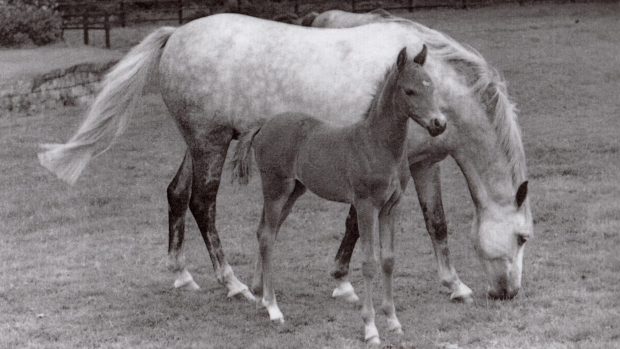The Welsh section A or Welsh Mountain Pony is one of the most popular breeds for both children and small adults.
Not to exceed 12h (121.9cm) the section A is the smallest of the four Welsh breeds. The breed, according to the Welsh Pony and Cob Society (WPCS) should be: “hardy, spirited and pony-like.”
They can be any colour, except for piebald and skewbald, and section A ponies with white socks and stockings are particularly popular in the show ring.
The section A is a popular choice for children, with many being seen at the top of lines in lead rein and first ridden classes. They also have their own open ridden final at Horse of the Year Show (HOYS) and this year, the winning section A, Glebedale Mumbo Jumbo, stood overall mountain and moorland ridden pony of the year in October, beating off several of his larger rivals.
The WPCS offers some advice on the desired breed characteristics to look out for:
Head: Small, clean-cut, well set on and tapering to the muzzle
Ears: Well placed, small and pointed, well up on the head, proportionately close
Neck: Lengthy, well carried and moderately lean in the case of mares, but inclined to be cresty in the case of mature stallions
Shoulders: Long and sloping well back. Withers moderately fine, but not “knifey”. The humerus upright so that the foreleg is not set in under the body.
Forelegs: Set square and true, and not tied in at the elbows. Long, strong forearm, well developed knee, short flat bone below knee, pasterns of proportionate slope and length, feet well-shaped and round, hoofs dense.
Back and Loins: Muscular, strong and well coupledg
Hind Quarters: Lengthy and fine. Not ragged or goose-rumped. Tail well set on and carried gaily.
Hind Legs: Hocks to be large, flat and clean with points prominent, to turn neither inwards nor outwards. The hind legs not to be too bent. The hock not to be set behind a line from the point of the quarter to the fetlock joint. Pasterns of proportionate slope and length. Feet well-shaped, hoofs dense.
Welsh ponies should also move well, and have action which is: “Quick, free and straight from the shoulder, Knees and hocks well flexed with straight and powerful leverage and well under the body.”
According to the WPCS, Welsh Mountain Ponies are believed to be descended from the Celtic pony and existed in the mountains of Wales for over a thousand years.
Available evidence tends to show that the Welsh Mountain Pony has existed since prehistoric times. They were originally used by farmers as ridden animals as well as in the pits and mines.
Today, the section A is predominantly used as the child’s first pony and the temperament of the breed is generally reliable, although there are always some exceptions. Due to its natural barrel type appearance and its ability to carry variable amounts of weight it can carry smaller or larger jockeys comfortably.
Article continues below…
You might also be interested in:

Subscribe to Horse & Hound magazine today – and enjoy unlimited website access all year round

The Connemara pony: everything you need to know about these Irish stars
Fascinated by this breed? Here’s all the facts you need to know about Connemaras
The Welsh Pony & Cob Society was founded in Wales in 1901, and their first studbook was published in 1902, containing the records of 38 stallions and 571 mares. In 1931 the height limit the section A was fixed at 12 hands.
The stallion Dyoll Starlight was credited with being the foundation sire of the modern breed. He was a combination of Welsh and Arab breeding. From his line came an influential stallion of the Section B type: Tan-y-Bwlch Berwyn. The often dished face seen on section A ponies is from the Arabian breeding influence.
For all the latest equestrian news and reports, don’t miss Horse & Hound magazine, out every Thursday
Do you have a story about a Welsh Section A you’d like to share with H&H readers? Then write to hhletters@futurenet.com for a chance to see your views in H&H magazine and win a bottle of Champagne Taittinger (please include your name and address; letters may be edited).




